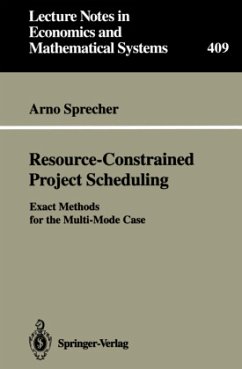Within a project human and non-human resources are pulled together in a tempo raray organization in order to achieve a predefined goal (d. [20], p. 187). That is, in contrast to manufacturing management, project management is directed to an end. One major function of project management is the scheduling of the project. Project scheduling is the time-based arrangement of the activities comprising the project subject to precedence-, time-and resource-constraints (d. [4], p. 170). In the 1950's the standard methods MPM (Metra Potential Method) and CPM (Cri tical Path Method) were developed. Given deterministic durations and precedence constraints the minimum project length, time windows for the start times and critical paths can be calculated. At the same time another group of researchers developed the Program Evaluation and Review Technique (PERT) (d. [19], [73] and [90]). In contrast to MPM and CPM, random variables describe the activity durations. Based on the optimistic, most likely and pessimistic estimations of the activity durations an assumed Beta distribution is derived in order to calculate the distribution of the project duration, the critical events, the distribution of earliest and latest occurence of an event, the distribution of the slack of the events and the probability of exceeding a date. By the time the estimates of the distributions have been improved (d. e.g. [52] and [56]). Nevertheless, there are some points of critique concerning the estimation of the resulting distributions and probabilities (d. e.g. [48], [49] and [50]).








